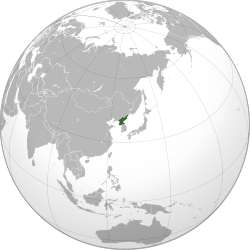North Korea: Another Rocket Launch? – Analysis
By IPCS
By Rajaram Panda
Is North Korea preparing for another rocket launch? What does this mean, especially after a failed bid last April? Will this strain its relations with South Korea which is currently preparing for its Presidential elections?
A satellite imagery company has reported increased activity at a North Korean launch site, which suggests that Pyongyang is planning a long-range missile test in just a few weeks. The image by Digital Globe showed an increased level of personnel, numerous portable fuel/oxidizer tanks, trucks and other equipment at North Korea’s Sohae (West Sea) Satellite Launch Station near the Chinese border.
Is Kim Jong-un flexing his military muscles?

North Korea’s planned launch between 10 December and 22 December has significantly strained relations with South Korea ahead of its presidential elections on 19 December. Understandably, South Korea has reacted swiftly declaring that it has “grave concerns” and that Pyongyang could face severe repercussions from the international community.
Washington too is aware of the reports and has been discouraging North Korea from conducting any further missile tests, saying it would be “extremely inadvisable”. The intelligence analysts in the US are too concerned about an increased activity. When Pyongyang tried last April to launch a long-range rocket that broke apart shortly after liftoff and crash landed in the Yellow Sea 60 seconds after it was launched, the UN Security Council in a presidential statement demanded that Pyongyang not proceed with any further launches using ballistic missile technology. But Pyongyang seems unperturbed. Its space agency, the Korean Committee for Space Technology, improvised the rocket, learning from its mistakes during the April launch. It stated the scientists and technicians have “deepened the work of improving the reliability and precision of the satellite and carrier rocket, thereby rounding off the preparations for launch.”
As far as the presidential poll in South Korea on 19 December is concerned, the neck-to-neck contest is between the ruling conservative party candidate Park Geun-hye, daughter of former South Korean leader Park Chung-hee and her Democratic Union Party rival, Moon Jae-in. The policies they are expected to adopt in relation to North Korea differ markedly. While Democratic candidate Moon is expected to adopt a “carrot and stick” approach, Park’s stance is more “stick than carrot.”
In the meantime, following the speculations about North Korea’s another ballistic missile launch, South Korea has made its third attempt to launch a space rocket and satellite on 28 November. The 33-meter (108-feet) KSLV-1 rocket, or Naro, carrying a 100-kilogram research satellite, was to blast off from a site near Goheung, 330 kilometers (200 miles) south of Seoul. But an abnormal thruster halted the launch, 17 minutes before the countdown. This was a third attempt to put a satellite into orbit using a rocket built with domestic and Russian technology. It is believed that South Korea has spent US$500 million on the Naro project to gain a toehold in the space-services market, while countries, including the US, contend that the North’s program is a cover for missile development. Success with the Naro rocket could bring long-term economic benefits of as much as US$3 trillion for South Korea via value-added exports and a share in the space-services market.
Polar Satellite or a Disguised ICBM?
In a rare public admission, North Korean officials had acknowledged the Unha-3 failure in April. The nation had maintained that the 1998 and 2009 attempts were successful, though according to Western analysts neither reached the orbit. Though Pyongyang claimed the much-hyped April launch was intended to put a polar-orbiting earth observation satellite into orbit, the US, South Korea and the UN all insisted it was a disguised ballistic missile test using a three-stage variant of the Taepodong-2 inter-continental ballistic missile, banned under UN sanctions. The West’s concerns stemmed largely from North Korea’s famous unpredictability, along with its status as a nuclear-armed nation. Given North Korea’s highly secretive nature, outside observers find it difficult to follow its activities and know what its motives are.
It is speculated that a nuclear-armed North Korea is developing an inter-continental ballistic missile with an aim of being able to strike the US. The new launch site activity is suspected to be a North Korean move to influence the outcome of the presidential election in South Korea scheduled for 19 December by waging a propaganda attack or conducting a missile launch. It is no secret that North Korean state media has threatened a “sacred war” against the conservative government of South Korean President Lee Myung-bak, whose hard-line stance against Pyongyang is well-known.
In sum, Pyongyang wants to restore its national pride after the failed launch. But if South Korea succeeds with the Naro rocket, the North’s technology will look weak in comparison. While speculation remains ripe on another launch by the North, South Korean military maintains its vigil. If Pyongyang goes ahead with its suspected plan, it would reduce the chances of economic aid from South Korea, harden the US stance against Pyongyang and embarrass the new leadership in China, Kim’s main benefactor.
Rajaram Panda
Guest Faculty, SLLCS, JNU
email:[email protected]
